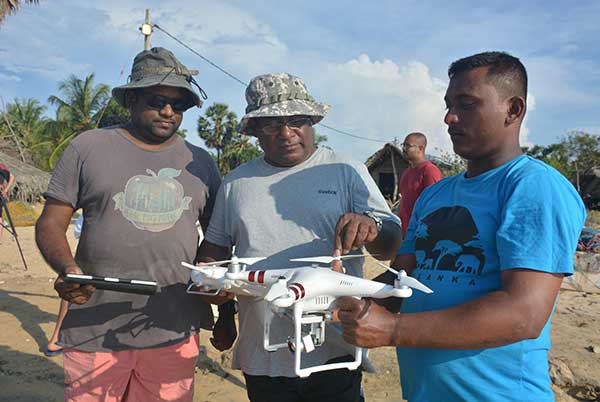Death at the bottom of the bay
By Zhao Xu ( China Daily ) Updated: 2017-04-22 07:09:52
 |
|
Prasanna Weerakkody of the Ocean Research& Conservation Association (middle) demonstrates the drone.[Photo provided by Malaka Rodrigo] |
Mobile app
However, this concern doesn't seem like a big issue, bearing in mind that for the past few months the Wildlife Conservation Department has been promoting a mobile app that enables users to take a picture of a dugong wherever they see it and then report the sighting directly to the department.
"The app can be downloaded by any mobile using the Android system," Suraweera says. "And we are actually giving free mobiles to fishermen operating within what we believe are dugong-active waters. We also have four other categories: dolphin, whale, turtle and unknown. Initially we planned to have a separate category of illegal fishing but later vetoed the idea, since this may ring alarm bells for fishermen and alienate them."
Weerakkody warned that to achieve any success with the local community, sensitivity is of crucial importance.
"We've done research with the local fishermen community. Every time our research team goes into a village we pretend to be someone else - a film crew, for example. And in the initial period we will not show any interest in dugong - just getting to know the villagers and building trust. We'll get to our point eventually, but even if someone tells us something that's really important, we'll never give out the source."
Modern technology
The Oceans Research & Conservation Association team is also trying to track down dugongs with the help of modern technology, sonar for example.
"Sonar, which stands for sound navigation and ranging, is a technique that uses sound propagation for the purpose of, among other things, underwater object detection," Weerakkody says.
|
|
|
|
|
|
|
|

























 Raymond Zhou:
Raymond Zhou: Pauline D Loh:
Pauline D Loh: Hot Pot
Hot Pot Eco China
Eco China China Dream
China Dream China Face
China Face






